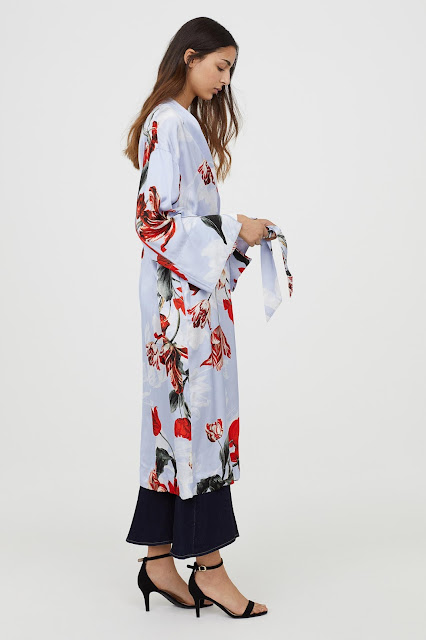Best And Worst Fabrics For Covered Ladies
Gif Source: Giphy.com
Garments made with breathable natural fabrics are pretty much non-negotiable if you are an Hijabi (read our definition of an Hijabi here ). I discovered this the sweaty way when I started wearing the Hijab which also involves dressing much more modestly. I am not talking about the dab with an handkerchief and you are good kind of sweaty, I am talking about the If I don't somehow dab and stop the flow of the droplets of sweat dripping down my chest, back and thighs with the garment I am wearing, I would be standing or sitting in my own pool of sweat kind of sweaty. Imagine experiencing that while you are giving a presentation at work, school or in any formal setting.
The constant dripping with sweat kind of sweaty that made me wonder where all that fluid is going from because as soon as I dab with an handkerchief, just seconds later, I am dripping sweat again. The kind of sweaty that slowly but surely erodes your confidence because it is very hard to appear composed and be composed when you are very sweaty and extremely uncomfortable.
I have always preferred quality breathable fabrics over non-breathable synthetic fabrics but as a new Hijabi, I was wearing Abayas everyday while trying to sort out my new clothing identity, and most of the abayas readily available are made with 100% synthetic fabrics or a mixture of synthetic and natural fabrics, but these sweaty experiences made me take a non-negotiable stance on synthetic fabrics, so if it's made with polyester, acrylic, rayon, viscose and nylon, it's a no from me (except when the weather is cold), and one of the reasons is because these fabrics are non-breathable fabrics: they don't absorb sweat, they trap moisture and heat and will hold your sweat against your skin, but will not let the moisture evaporate and escape into the air, the result is a hot clammy garment that holds in your body heat. It's literally like wearing plastic. Based on my experience, even rayon/viscose Jersey which is a lightweight fabric that is often marketed as an absorbent fabric also does not absorb sweat, it does not trap heat like the other synthetic fabrics, but it does not absorb sweat.Apart from the fact that these synthetic fabrics are non-breathable, they are also non-biodegradable.
The smell of these synthetic fabrics is another issue on its own. Read below:
"Synthetic fabrics host more stench-producing bacteria: the study involved 26 volunteers who took a spinning class while wearing shirts made of cotton, polyester, or a cotton-polyester blend. The shirts were sealed in plastic bags and then sniffed by trained panelists the next day.
The panel reported that the polyester shirts were "significantly less pleasant and more intense" and smelled "more musty, sour, and ammonia-like than the cotton."
The odour causing bacteria Micrococcus were isolated in almost all synthetic shirts and were detected almost solely on synthetic shirts as compared to cotton, according to the researchers. As Scientific American reported:
"...researchers say they (Micrococcus bacteria) thrive on the open-air lattice of synthetic fibres - where they sit chomping on the long-chain of fatty acids in our sweat, turning them into shorter, stinkier molecules." Source: Mercola.com
Source: Giphy.com
- POLYESTER: This includes naturally occurring chemicals such as the cutin of plant cuticles as well as synthetic polymers that are made from esters of dihydric alcohol and terpthalic acid. This material is very widely used in clothing.
- ACRYLIC: This is a synthetic fibre used to imitate wool, including cashmere. It is also used for a lot of other items including tracksuits, as linings for boots and gloves etc.
- RAYON/VISCOSE: The terms rayon and viscose are used interchangeably nowadays. Viscose is a viscous manmade organic liquid used to make rayon and cellophane. It is used in a lot of jersey clothing.
- NYLON: This is a tough, lightweight synthetic polymer with a protein-like chemical structure. It is often used to imitate silk.
The following is the list of fabrics I favour, I will update the list as I try out more fabrics:
- SILK: Made from the fibres of the cocoon of the silk worm. Highly absorbent and luxurious fabric that lets your skin breathe. An all-climate fabric, silk keeps you warm in winter, and it is comfortably cool when temperatures rise.
- COTTON: A plant fabric. Highly absorbent, a good conductor of heat, breathable and very comfortable to wear.
- WOOL: Made from the hair of sheep, domestic goats, Indian cashmere goats (Cashmere) and North African Angora goats (Mohair).
- MODAL: This is a plant fabric like cotton. It is a cellulose fibre made by spinning reconstituted cellulose from beech trees. It is more absorbent than cotton, it is lightweight and has the luxurious appearance of silk.
- LINEN: This is a plant fabric. It is made from the fibres of the flax plant (Linum Usitatissimum) while cotton is made from the fluffy part of the flower. It is highly absorbent and ultra-breathable.
- BAMBOO: This is a plant fabric made from Bamboo fibres. It is a very soft and highly absorbent fabric that is often compared to silk or cashmere.
- CUPRO: This is a plant fabric. It is a cellulose fibre made from recovered cotton waste. Cupro fabric breathes like cotton, but it is much more luxurious than cotton. It is often used as a substitute for silk, but unlike silk, it can be Machine washed.
The next time you are shopping for new outfits, remember to check the fabric composition of the clothes you are buying, so you don't experience sweaty situations like I did as a new Hijabi or covered girl ;)
Read this next: How Your Clothes Are Poisoning Our Oceans And Food Supply
Read this next: How Your Clothes Are Poisoning Our Oceans And Food Supply










Comments
Post a Comment